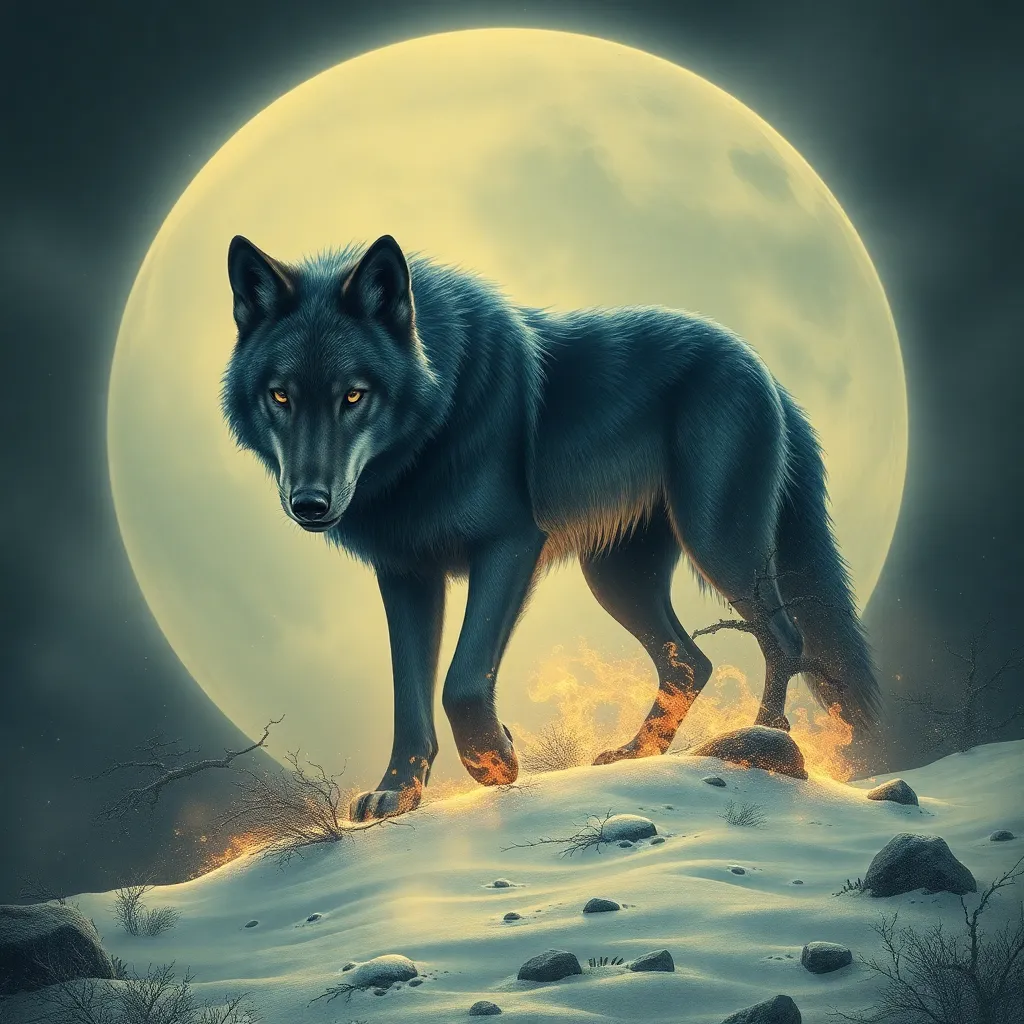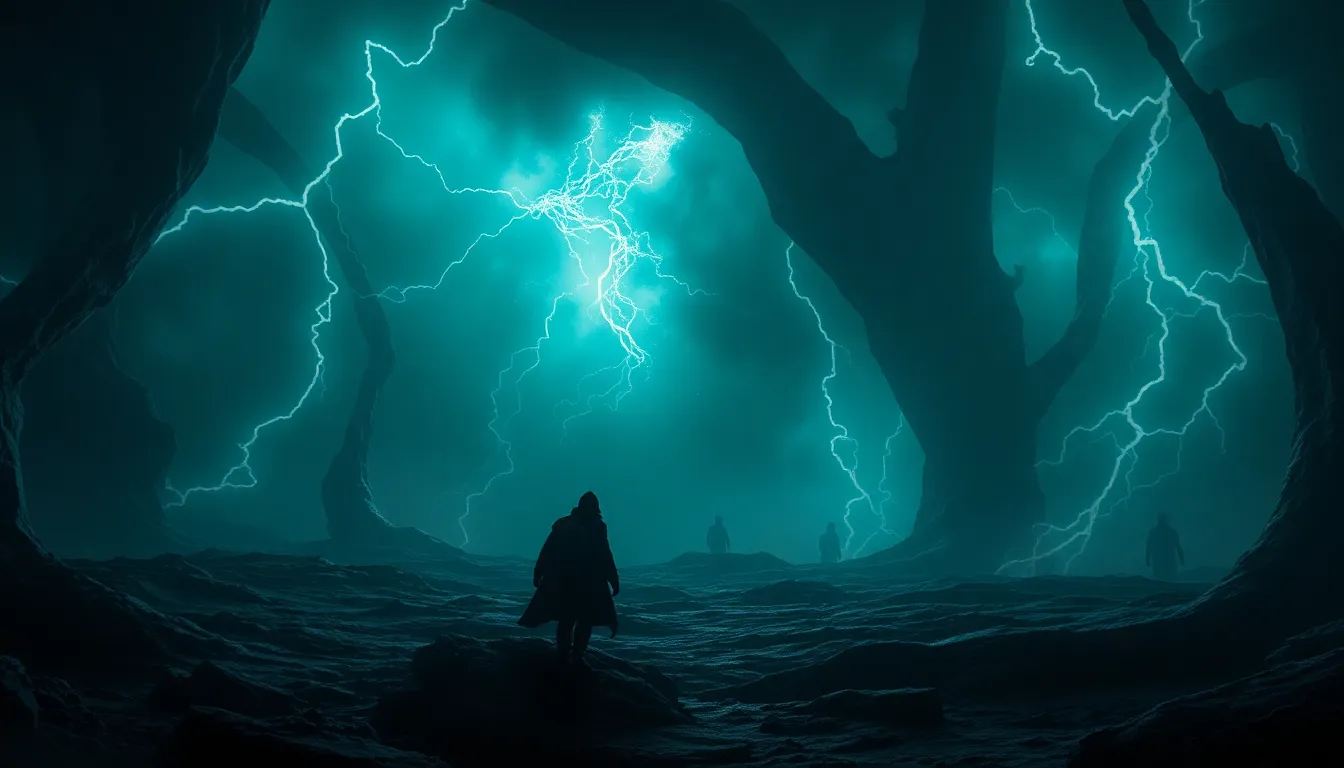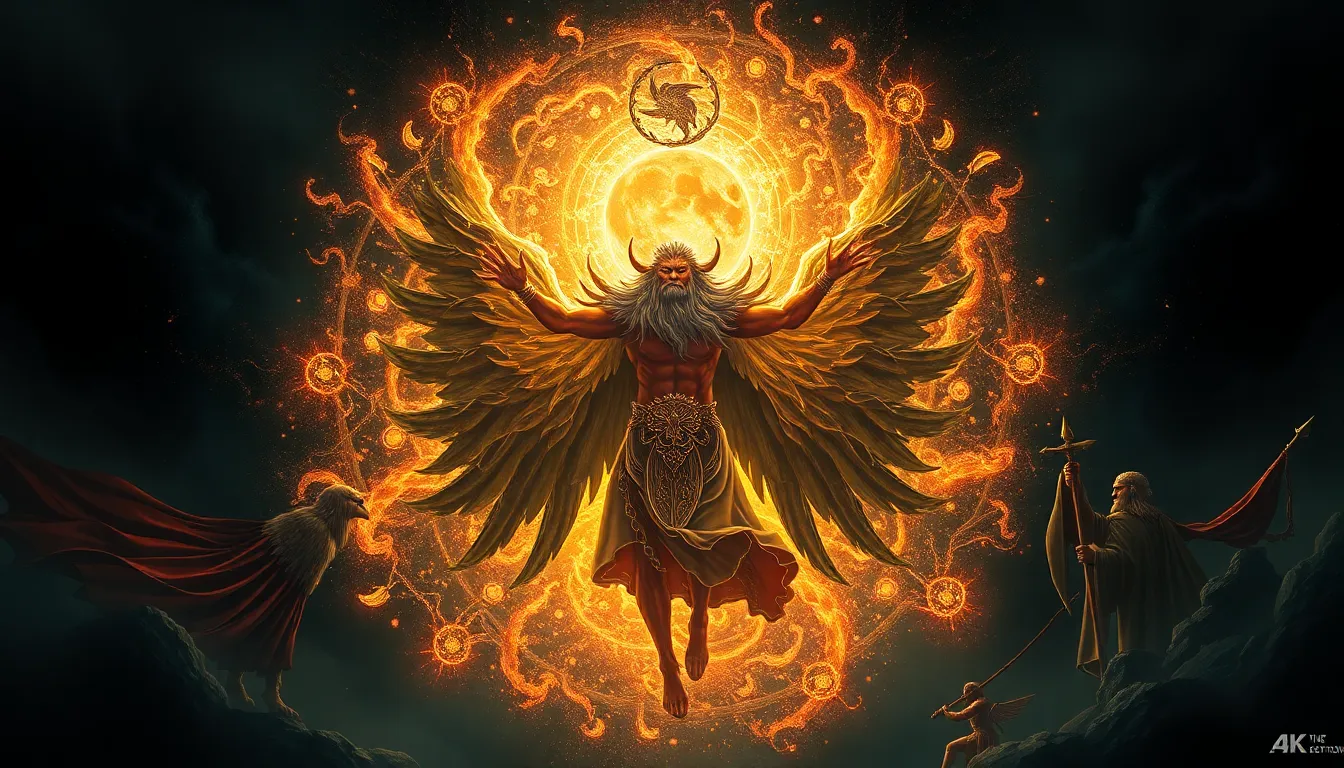Fenrir’s Legacy: The Enduring Impact of the Wolf on Norse Culture
I. Introduction
In Norse mythology, Fenrir stands out as one of the most formidable figures—a monstrous wolf prophesied to play a key role in the destruction of the world during Ragnarok. His story encapsulates the complex relationship between humanity and nature, particularly through the lens of one of the most feared yet revered creatures: the wolf. This article aims to delve into Fenrir’s legacy and explore the broader cultural implications of the wolf in Norse society.
II. Fenrir: The Mythical Wolf of Norse Lore
Fenrir is often depicted as the offspring of the trickster god Loki and the giantess Angerboda, making him a creature of significant lineage that ties him to both the divine and the monstrous. The Eddas, the primary sources of Norse mythology, recount various key stories involving Fenrir, the most notable being his binding by the gods in fear of his immense power.
A. Origins and lineage of Fenrir
Fenrir’s origins are rooted in the chaos of primordial creation. As one of Loki’s three children—alongside the serpent Jörmungandr and Hel—Fenrir was destined to bring about great strife and upheaval. The gods, recognizing his potential for destruction, sought to contain him.
B. Key stories and events involving Fenrir in the Eddas
- The Binding of Fenrir: The gods devised a plan to bind Fenrir using a magical chain called Gleipnir, forged from six mythical ingredients. Fenrir, sensing betrayal, bit off the hand of the god Tyr as a condition of his binding.
- Ragnarok: During Ragnarok, Fenrir is foretold to break free from his chains and engage in a cataclysmic battle against the gods, ultimately killing Odin, the Allfather.
C. Symbolism of Fenrir as a harbinger of Ragnarok
Fenrir’s role as a harbinger of Ragnarok symbolizes the inevitability of chaos and destruction. He represents the darker aspects of nature and the uncontrollable forces that can disrupt the order established by the gods.
III. The Wolf in Norse Symbolism and Imagery
The wolf is not merely a character in myth but serves as a powerful symbol throughout Norse culture. It embodies attributes such as strength, ferocity, and loyalty.
A. The wolf as a symbol of strength and ferocity
In Norse culture, the wolf was revered as a symbol of strength, often associated with warriors and their valor in battle. Wolves were seen as fierce protectors of their packs, embodying the warrior spirit.
B. Artistic representations of Fenrir and other wolves in Norse art
Artistic depictions of Fenrir and wolves in Norse artifacts often highlight their ferocity and majesty. From intricate carvings on runestones to motifs in Viking ships, the wolf’s image is prevalent.
C. The wolf’s role in Norse runes and language
The wolf’s significance extends to Norse language and runes. The Proto-Norse word for wolf, “wulfaz,” is the root of various names and words in modern languages, showing the enduring legacy of this creature.
IV. Fenrir’s Influence on Viking Society
The wolf held a prominent place in Viking society, influencing various aspects from warfare to cultural identity.
A. The wolf in Viking warfare and its representation in battle
Wolves were often used as symbols in battle standards, representing the ferocity and bravery of Viking warriors. The image of a wolf was believed to instill fear in enemies and inspire confidence among allies.
B. Fenrir’s association with bravery and loyalty among warriors
Fenrir came to symbolize the ideals of bravery and loyalty, traits highly valued in Viking culture. Warriors who embodied these characteristics were often compared to the wolf, enhancing their status and reputation.
C. The cultural significance of wolf-related names and totems
Wolf-related names, such as “Wolfgar” or “Wulfric,” were common among Vikings, reflecting the cultural significance of the creature. Totems and symbols featuring wolves were prevalent, serving as a reminder of the values associated with them.
V. The Wolf in Norse Spirituality and Beliefs
Wolves also played a crucial role in Norse spirituality, representing dual aspects of nature.
A. The role of wolves in Norse shamanism and rituals
In Norse shamanism, wolves were often seen as spiritual guides or protectors. Rituals invoking the wolf were performed to seek guidance or protection during significant life events.
B. Fenrir’s connection to fate and destiny in Norse cosmology
Fenrir’s destiny to kill Odin during Ragnarok reflects the Norse belief in fate. His story serves as a reminder that even the gods are subject to fate’s inevitable course.
C. The dual nature of the wolf as both protector and destroyer
The wolf embodies a paradoxical nature in Norse mythology, acting as both a protector of the weak and a destroyer of the gods. This duality reflects the complexities of the natural world and human existence.
VI. Fenrir’s Legacy in Modern Culture
Fenrir’s impact extends beyond ancient Norse culture into modern literature, media, and spirituality.
A. References to Fenrir in contemporary literature and media
Today, Fenrir appears in various forms of media, including novels, films, and video games, often portrayed as a powerful and fearsome entity. His character continues to captivate audiences, reflecting the timeless allure of Norse mythology.
B. The resurgence of interest in Norse mythology and its symbols
In recent years, there has been a resurgence of interest in Norse mythology, prompted by popular culture and a growing fascination with ancient beliefs. Fenrir’s story has become a focal point in this revival.
C. Fenrir as a cultural icon in modern paganism and Norse heathenry
Fenrir has become a significant figure in modern paganism and Norse heathenry, representing the wildness of nature and the importance of embracing one’s inner strength and ferocity.
VII. Comparisons with Other Cultural Symbolisms of Wolves
Wolves hold significant places in various mythologies and cultures, often embodying similar themes of strength and loyalty.
A. The wolf in other mythologies and folklore
Across different cultures, wolves are portrayed in various ways. For example, in Roman mythology, the she-wolf raised Romulus and Remus, symbolizing nurturing and protection.
B. Common themes in wolf symbolism across cultures
- Strength and ferocity
- Loyalty and family bonds
- Protection and guardianship
- Ambivalence between good and evil
C. Fenrir’s unique position in contrast to other wolf figures
While many cultures celebrate the wolf as a noble creature, Fenrir stands apart due to his association with destruction and chaos, highlighting the complexity of his character in Norse mythology.
VIII. Conclusion
Fenrir’s legacy endures as a multifaceted symbol within Norse culture, representing the strength, ferocity, and unpredictable nature of the wolf. His story serves as a reminder of the duality of existence, where creation and destruction are intertwined. The significance of the wolf in human mythology reflects our inherent connection to nature—an acknowledgment of both its beauty and its dangers. As we continue to explore these ancient tales, Fenrir remains a potent cultural icon, resonating with contemporary themes of power, fate, and the primal forces of the natural world.



